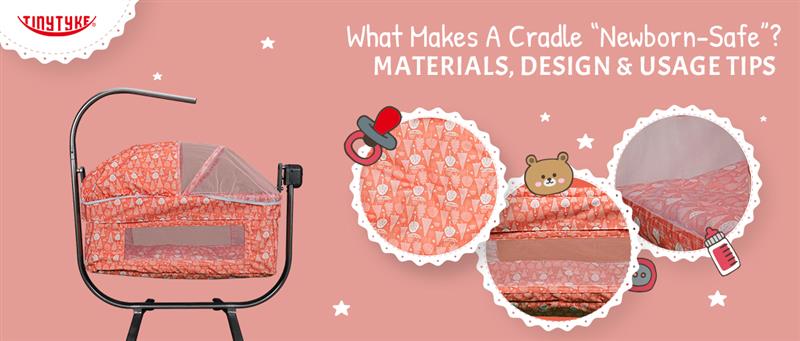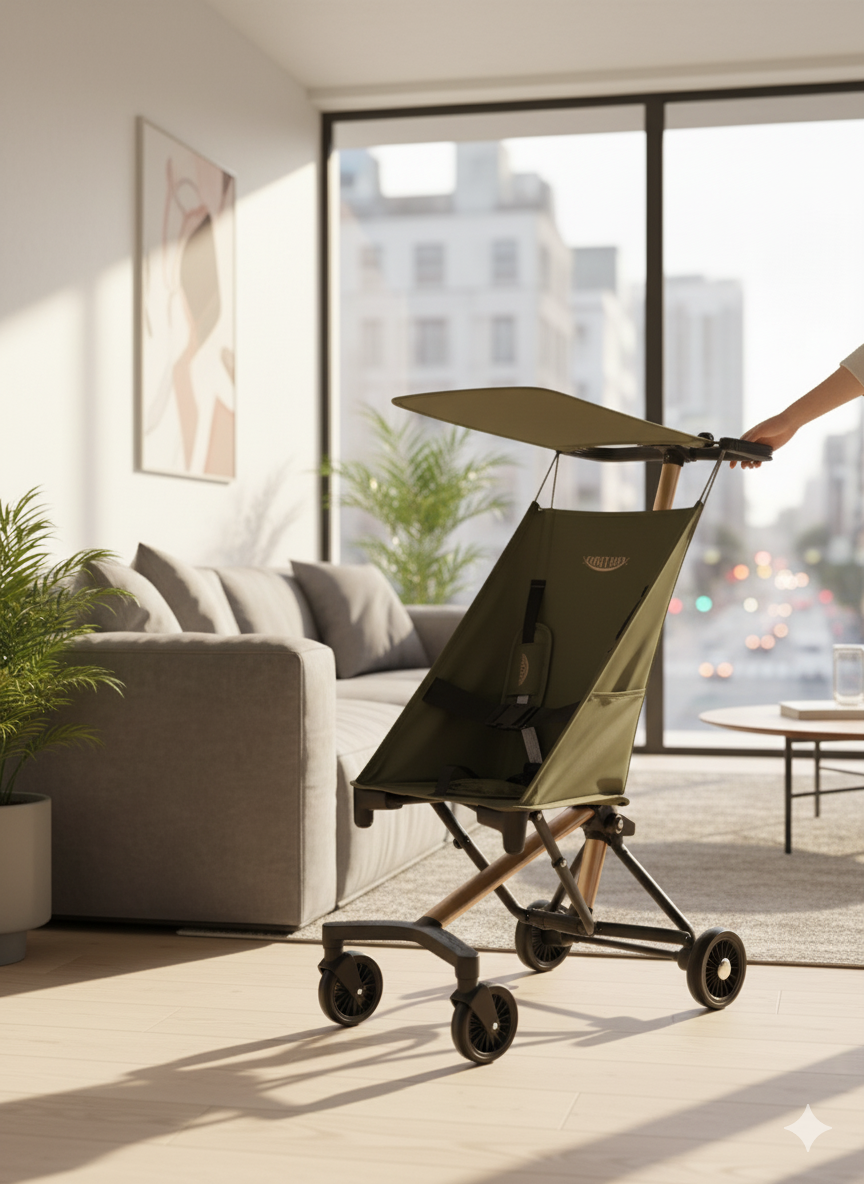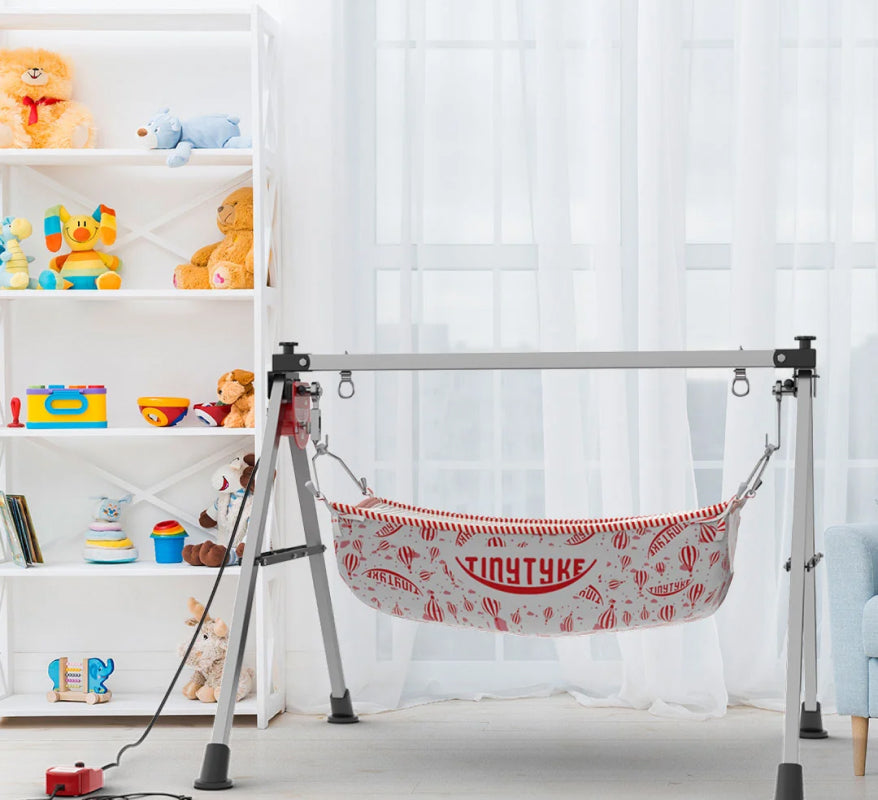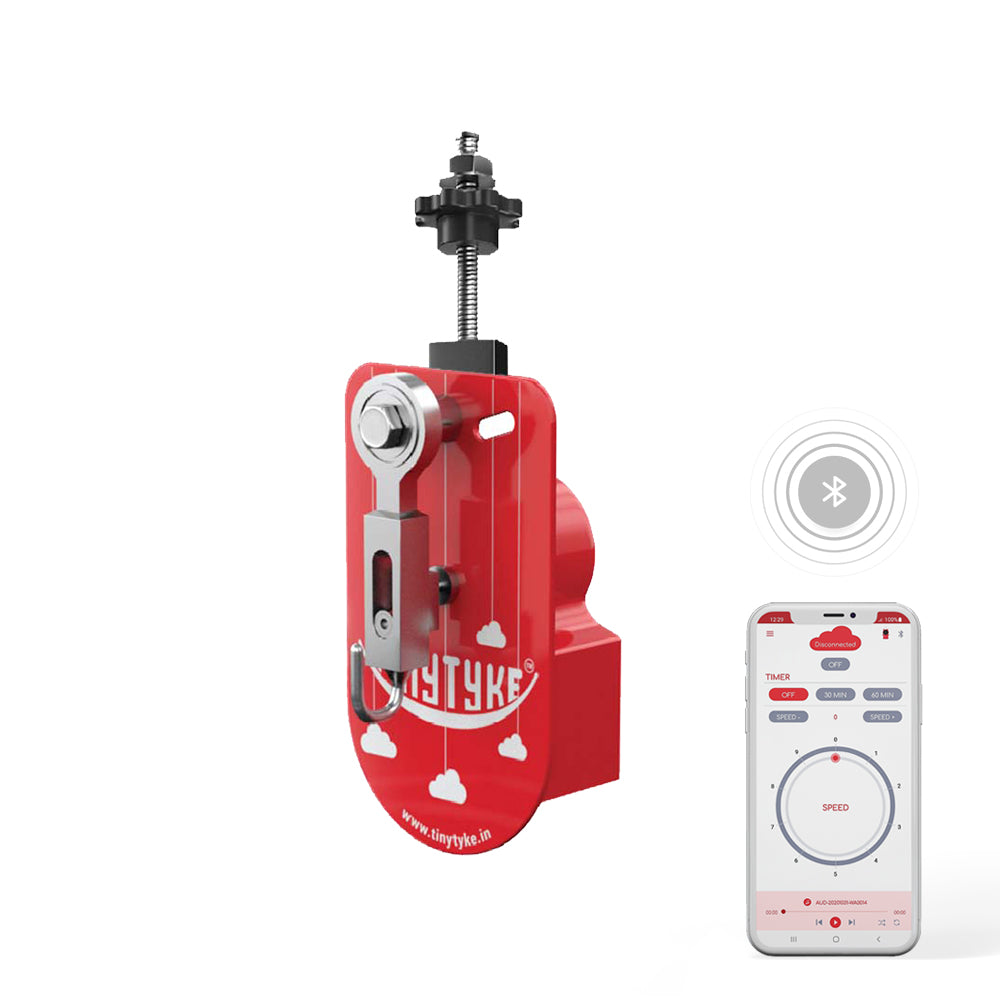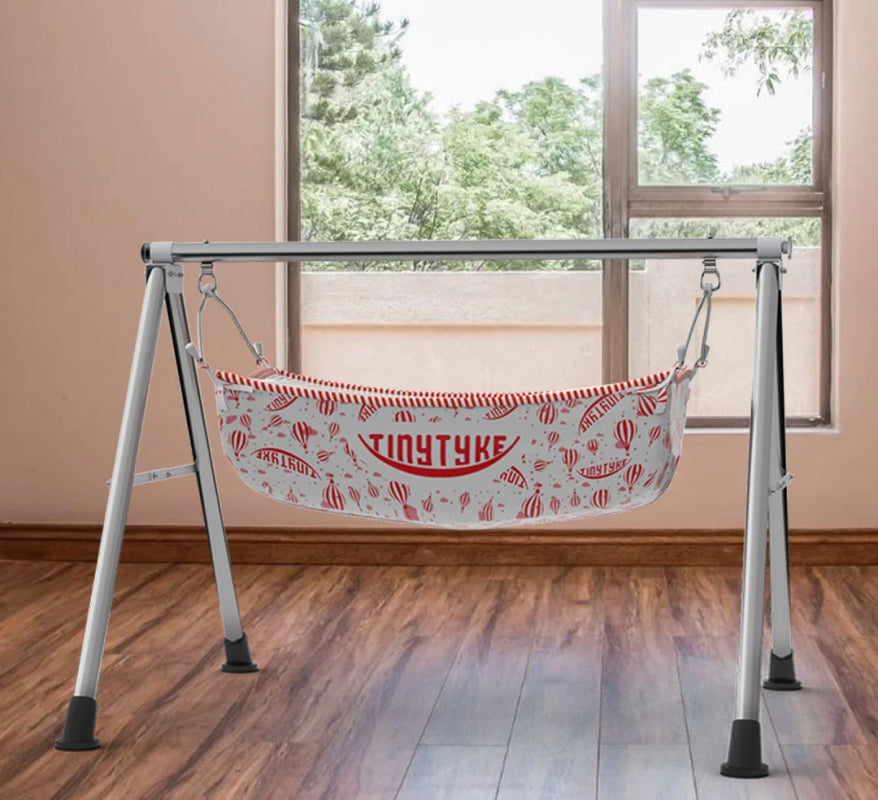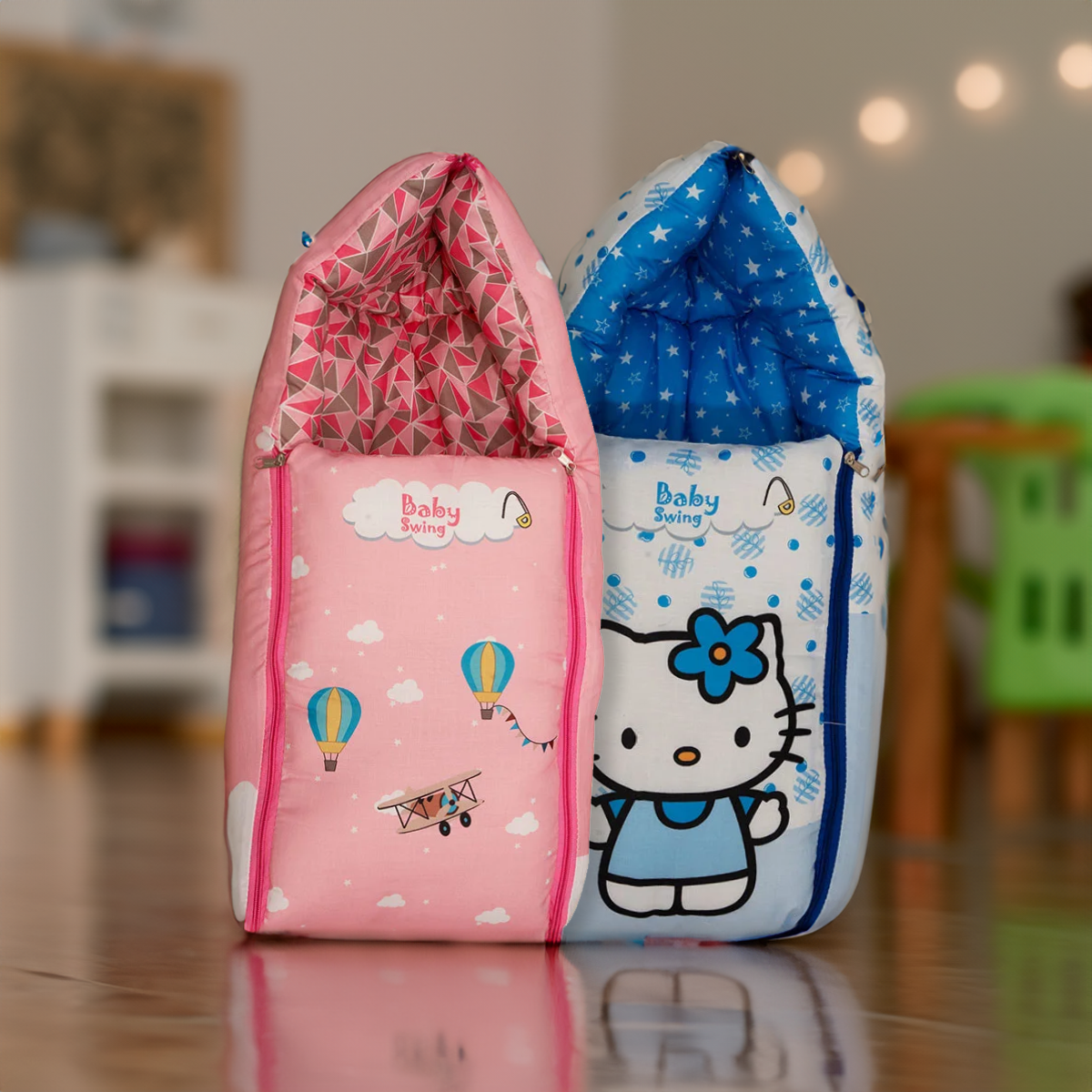When getting ready for a new baby, determining where your infant will sleep is typically one of the first items on your list. Although it may appear to be a minor consideration initially, a crib can significantly impact your baby's initial comfort and protection.
Newborns possess fragile bodies, sensitive skin, and require additional support during the early months, which makes selecting the appropriate new born baby cradle more important than many think.
Every detail, from the material and structure to the way it rocks or sways, contributes to creating either a secure environment or one that requires reconsideration. And with so many options out there, wooden cradles, portable swings, traditional ghodiyus, it’s easy to get confused.
This blog breaks down exactly what makes a new born baby cradle safe: the materials to look for, the kind of design that works best, and a few helpful tips on using it the right way from day one.
1. Why Choosing The Right New Born Baby Cradle Matters
Infants are extremely fragile. Neck muscles have not yet developed, skin is overly sensitive, parent and infant comfort levels are relative to their ecology. This is why the baby cradle and swing you select is so important. It is not merely a furniture choice; it is your baby's very first cozy little corner in the world.
An infant-safe cradle should feel like a soft embrace, not a rigid box. While it may be amusing to consider some of the Eye-catching designs or accessories, it is the basics of the cradle, materials, shape, and motion apparatus that truly count.
2. Safe Materials: What To Look For
The first thing to check? What the baby cradle and swing is made of. Here's what you should be looking for:
- Breathable fabrics: Cotton or organic blends are gentle on baby skin and allow good airflow, reducing the risk of overheating.
- Non-toxic coatings: If the new born baby cradle includes wood or metal parts, make sure the paints or polishes used are child-safe and free from harmful chemicals.
- Strong and secure frame: Whether it’s wooden or stainless steel, the structure should feel sturdy. No wobbly legs or loose bolts.
A lot of modern baby cradle and swing combos come with cushioned interiors. These are okay as long as they’re firm and don’t let the baby sink in too much. Soft does not always mean safe.
3. Smart Cradle Design = Safer Sleep
Beyond materials, the design of the baby cradle and swing matters more than most people realize.
- Deep enough, but not too deep: You want a cradle that prevents baby from rolling out but still allows easy access for parents.
- Good airflow: Having mesh sides or open patterns in the fabric help airflow and allows you to glance at your baby from above instead of hovering.
- Steady swinging mechanism: If your new born baby cradle has a swing or rocking feature, it should swing smoothly (it will slow down gently without jerking).
Traditional Indian ghodiyus and palnas provide a good cradle design. They contour a baby's back and carry on that natural motion that babies experience in the womb. It is easy to see why they have stood the test of time.
4. Cradle Or Swing? Here's How To Choose
You’ll often see cradles paired with swings, especially in modern products. But is it always the best option?
Let’s quickly break it down:
| Feature | Baby Cradle Only | Baby Cradle + Swing |
| Gentle motion | Manual (rocking) | Automatic/manual |
| Focus | Pure sleep setup | Sleep + soothing |
| Suitable for tiny newborns | Yes | Yes (with caution) |
| Movement control | You | Cradle/sensor-based |
Both styles can be safe if designed well. Just make sure the swing feature isn’t too fast or overstimulating for your newborn. In the early months, less is more.
5. Tips To Use It Right (No Matter Which One You Pick)
You can purchase the best baby cradle swing on the market; even so, it is not safe until used appropriately. Here are a few basics to always remember:
- Back is best. Always place your baby on their back to sleep; it’s the safest position.
- Keep it empty. No pillows, toys, or blankets inside. Just a fitted sheet is enough.
- Check for loose parts. If your cradle rocks or swings, make sure everything stays tight and secure.
- Supervise naps. Cradles are for short naps, not long, unsupervised sleep.
- Move on when it’s time. If your baby starts rolling or sitting up, it’s time to switch to a crib.
Final Thoughts: Start Simple, Stay Safe
There isn't an ideal cradle, yet there is one that fits your everyday routine, your living space, and above all, your infant. Whether you prefer a classic cradle or are interested in a contemporary model that includes a swinging option, prioritize simplicity and safety.
If you have any doubts, return to fundamental principles. Examine the materials, observe its motion, and select what seems pleasant for both you and your child. Ultimately, your infant requires nothing more than a serene, cozy place to rest.
Explore TinyTyke’s collection and buy baby cradle that suits your life today.
